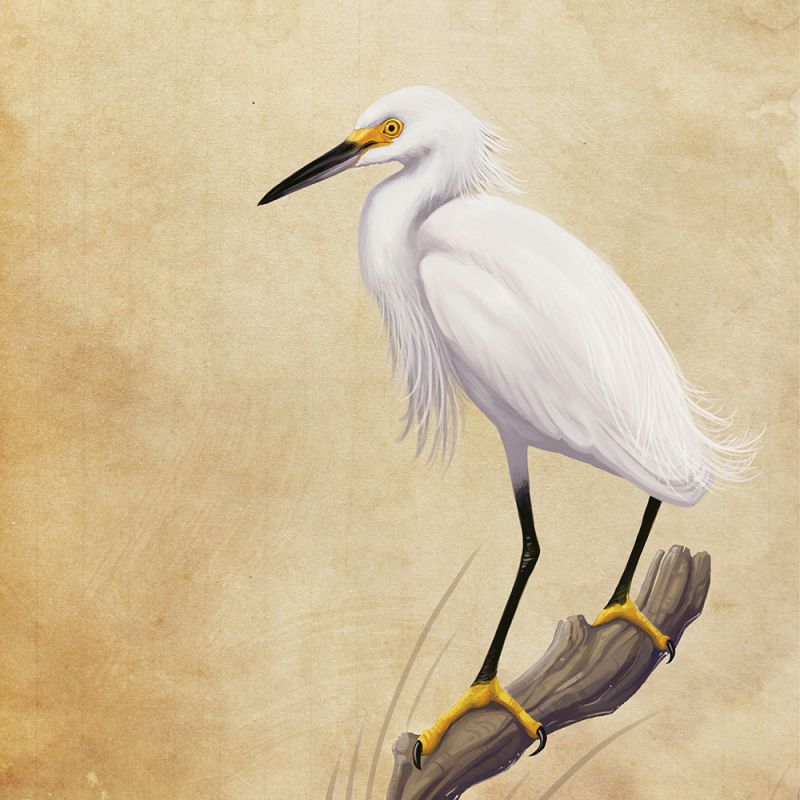
Where in the World? In various parts of the year, snowy egrets can be found throughout much of the United States (though they don’t venture to the most northern areas), as well as in Central and South America. The Cornell Lab of Ornithology notes that habitat loss is the animal’s greatest threat, as more than 100 million acres of US wetlands have been drained since Colonial days.
Age Matters While there’s a nearly 72-percent mortality rate during the bird’s first year (starvation and bad weather are often to blame), they can live to about 17 years.
Dangerous Beauty During the spring breeding season, both males and females grow long, wispy feathers on their backs, necks, and heads to attract mates. These plumes were once so prized in the fashion industry (they were worth $32 per ounce in 1886—then twice the price of gold) that hunting almost decimated the species. Now protected by law, their populations have rebounded.
Color Coding Adults have bright yellow feet and black legs (immature birds have duller greenish legs). A yellow patch of skin shows at the base of their solid black bills. During breeding season, this skin takes on a reddish hue, and their feet turn a deeper orange.
Family Dynamics Males choose the nesting site—often in the top or outer branches of a woody vine, shrub, or tree—and start building even before finding a mate. The female finishes with materials furnished by her partner, creating a shallow oval woven loosely from twigs, grasses, and Spanish moss. Both parents help feed the young; as one takes over duties from the other, they sometimes offer a stick in what looks rather like a ”passing of the baton.”
Rustling Up Dinner Enjoying a diet of aquatic animals, including fish, frogs, crabs, and insects, snowy egrets spend more time feeding than other herons, often rounding up critters by paddling their feet in the water or using them to probe in the mud. You may also spy this bird running through the water, chasing prey with its wings spread wide.
Birds of Many Feathers These extremely social, gregarious creatures are often seen fishing the shallows with other shorebirds and nesting with different species (roseate spoonbills, great egrets, glossy ibises, and on) in busy waterfront colonies in isolated places, including barrier islands, salt marsh islands, and marshes. They have also been known to mate with other herons, producing hybrid offspring.
Watch a snowy egret fishing on South Carolina's Fripp Island below: